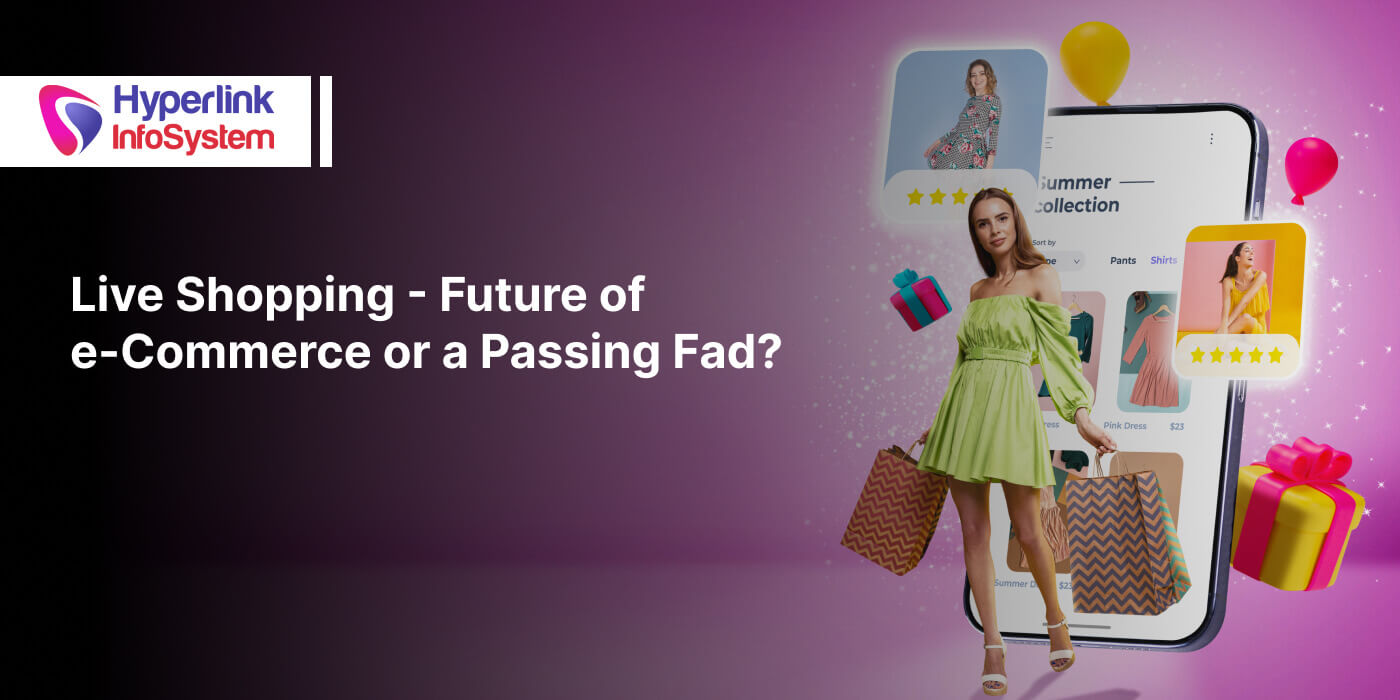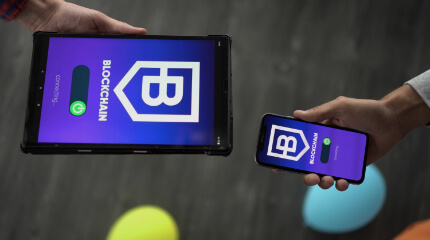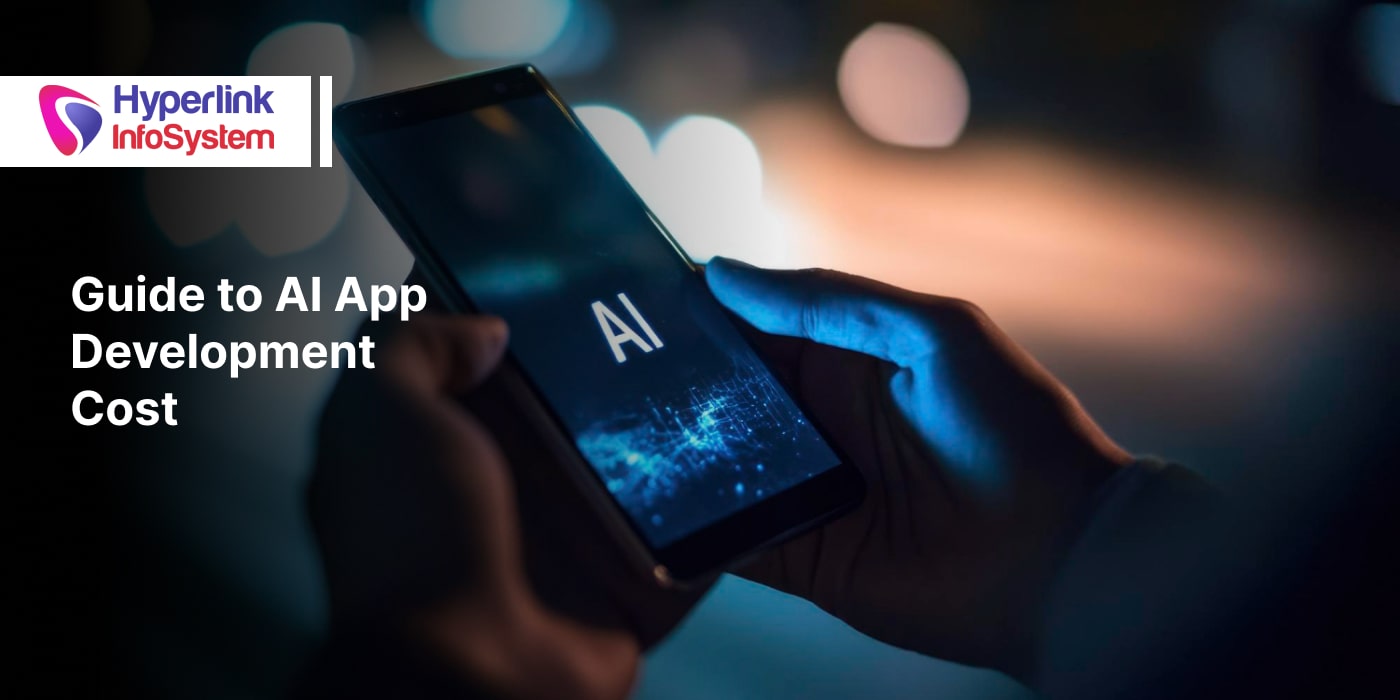Live Commerce Boom: Is It the Next Big Thing in Online Shopping?
Jun 2025

You know that feeling when you order something online, and it looks nothing like the picture? Trust me, you are not alone in this. Many of us have been there. Well, guess what? Live shopping is the next big thing in eCommerce, and it's transforming the sector as we speak.
Live commerce gained popularity during the COVID-19 pandemic and was snubbed as a fad. As of 2025, the global live shopping market size is estimated to be valued at $19.86 billion. This figure is projected to touch $258.76 billion by 2034.
Six to seven years ago, live commerce was in the experimental phase, where platforms used it to host live product demos. In these product demos, companies used influencers or celebrities to grab the attention of potential customers, but there were no purchase options within the video.
Fast forward to today, where AI-powered personalization, fully-integrated live shopping platforms, and enhanced interactivity are common in live shopping.
However, many companies are yet to tap into the limitless possibilities of live shopping. What is live shopping? How effective is live shopping? How do companies implement it for their e-commerce operations? What is the future of live commerce? In this blog, we will cover multiple aspects of live shopping - the next big thing in the e-commerce sector. Let’s get started.
What is Live Shopping?
When the pandemic hit, it became hard for people to shop in person at stores. But brands in China did not back down. They saw an opportunity in this adversity, and this marked the birth of live shopping.
Live shopping is not only simple but also creative, helping companies promote their products and engage with their target audience effectively.
Live shopping, or live commerce, is essentially when a brand ropes in a celebrity or well-known figure to showcase a product. These influencers often boast millions of followers on Instagram, TikTok, and other platforms.
Brands leverage this star power to gain more views, which increases the chances of conversions. The magic of live shopping lies in its interactive elements, such as real-time chats, captivating product demonstrations, and limited-time offers that drive sales and revenue.
What makes live shopping so exciting is that it all unfolds in real-time. There are no retakes, edits, or flashy effects to pull attention away from the product. During the live stream, viewers can interact with the host, ask questions, and dive deeper into the product’s features, benefits, and more.
Some studies indicate that live-stream shopping can increase conversion rates by 30%. Another study states that sales powered by live commerce could account for up to 20% of e-commerce sales by 2026.
7 Types of Live Commerce
Over the last ten years, live shopping has undergone a drastic transformation. It's definitely not the same as before, with companies finding innovative ways to promote their products. This section will explore the different types of live commerce.
1) Influencer-Based Live Commerce
- Who? - Think social media influencers, celebrities, podcasters, or experts in specific niches.
- Where? - Instagram Live, TikTok Live, YouTube Live, Facebook Live, and specialized platforms.
- Style - Influencer-based live commerce employs a personal, casual, and trust-based approach. These famous personalities demonstrate and endorse products while offering attractive discounts.
- Best Suited For - Fashion, beauty, lifestyle, and tech products.
2) Brand-Owned Live Commerce
- Who? - The brand selling the product performs the live stream with in-house experts or employees.
- Where? - The action happens on the brand’s social media handles or the official website.
- Style - High-quality production standards, attention to detail. It may resemble TV shopping.
- Best Suited For - Product launches, special promotions, or large-scale campaigns.
3) Retailer Platform Live Commerce
- Who? - Distinguished retailers like Walmart, Sephora, Wayfair, and Aldo go live.
- Where? - Usually on their e-commerce platforms or partner with TikTok, Instagram.
- Style - Either uses in-house professionals/presenters or teams up with influencers or creators.
- Best Suited For - Large retail platforms with millions of visitors/customers who have the intent to purchase.
4) Shoppable Television
- Host? - Television channels, OTT platforms, or streaming devices.
- Where? - Smart TVs and other connected devices.
- Style - Allows viewers to purchase products seen on the screen in real-time.
- Best Suited For? - Fashion, home appliances, daily use items, and consumer tech. Highly effective during live TV shows, concerts, or sporting events.
5) Market Seller Live Streams
- Who? - Individual sellers and small businesses can leverage dedicated live streaming platforms such as Channelize, TalkshopLive, and Bambuser.
- Where? - Within a broader marketplace app or platform.
- Style - Uses an informal, D2C interaction style and real-time deals.
- Best Suited For? - Bargain shopping, local goods, or niche products.
6) Gamified Live Commerce
- Who? - Sellers, hosts, and influencers.
- Where? - Specialized apps or platforms (for example, Whatnot, Woot, BestBuy).
- Style - Includes elements like live bidding, raffles, countdowns, and interactive giveaways.
- Best Suited For? - Collectibles, streetwear, vintage items, and limited editions.
7) Personal Live Shopping
- Who? - Sales associates or personal shoppers.
- Where? - Video chat integrated into eCommerce or apps.
- Style - Personalized and appointment-based. Imitates in-store consultation.
- Best Suited For? - High-involvement purchases such as electronic appliances, insurance policies, luxury goods, and cars.
These are just a few examples of live commerce. Which model or live commerce format is best for your business? It depends on the product, target audience, geographical location, and other factors. Hire dedicated developers to build the perfect live shopping app for your business.
How Do Customers Shop From Live Streams?
Live shopping is not just companies showcasing products for customers to purchase. The objective of live shopping is to make shopping fun, seamless, and interactive.
Thanks to live shopping, customers can watch videos, engage, and purchase without leaving the stream. Below are some ways in which companies use live streams to entice customers.
- Platform-integrated Shopping
Social media platforms like Instagram and TikTok have incorporated features that let viewers purchase their favorite products..These options are simple, with no redirects to a website or a third-party app. For instance, with Instagram shopping, brands can tag products in real-time. All viewers have to do is tap on it, proceed to checkout, and complete the purchase.
- Smart Live Shopping Apps
Some companies use third-party software to interact and build a connection with the viewers. Sprii (formerly Elisa) has innovative features that take live shopping experiences to the next level. Viewers who want to buy products showcased on the app simply have to comment with phrases such as Yes Please and they instantly receive a purchase link in the DM or comments.
- Direct Purchase Links
Viewers want convenience and ease of use. Many sellers place product links in video descriptions or pinned comments. These links take viewers to the company’s webshop, driving traffic and sales. Direct purchase links are an excellent strategy that grabs viewer attention with the video and then provides the product link, encouraging them to take action.
- Biggest USPs of Live Commerce
- Minimizes the number of steps required to complete the purchase. Achieve more conversions with fewer clicks.
- Cleverly crafted videos on social media generate greater buzz with thousands to millions of comments, shares, and likes. This indicates that the platform to increase the reach of the post/video.
- Limited-time offers, live-only discounts, and massive viewer interactions create a FOMO-driven momentum, resulting in increased purchases.
Want to know how to integrate live shopping into your business? Consult an E-Commerce development company with a proven track record.
10 Steps to Implement Live Shopping for Your Business
Bringing live commerce to an online store can change the fortunes for most companies. However, merely following the trend will not yield results. It requires in-depth research and a tailored strategy that combines entertainment, engagement, and sales. Below is a step-by-step guide to implementing live commerce for a business.
1) Crack the Live Commerce Code With Deeper Understanding
- What is Live Commerce?
Live Commerce of live shopping is a powerful blend of e-commerce and live streaming. With their charm and skills, influencers and hosts promote products, highlighting the value they bring to viewers, which results in quick purchases.
- Why is e-commerce a Paradigm Shift in 2025?
During the last 5 to 6 years, live commerce has made giant strides, adopting elements like AI-enhanced personalization, integrated shopping features, sustainability practices, and data analytics, all while being mindful of the ever-increasing customer expectations. This makes live commerce more interactive and data-driven than ever before.
2) Set Clear Goals and KPIs
What does success mean for a company? Depending on the company, sector, or expectations, the definition of success can differ. For some, it may be sales, profits, or revenue, while for others, it may mean brand awareness, product education, and customer acquisition. Considering these factors, companies must use relevant KPIs such as the following-
- Conversion Rates
- View Duration
- Engagement Rates
- Average Order Value (AOV)
- Retention and Return Viewer Rates
3) Pick the Right Platform
Picking the right platform can be integral to live commerce success. Who is your target audience? What technical features do you need to get the most out of live commerce? What are your goals? Ask yourself these questions before choosing a platform for live shopping. Some noteworthy options are listed below.
Platform Options
- Social media platforms such as Instagram Live, TikTok Shop Live, and YouTube Live. Pinterest, Snapchat, and WhatsApp are also gaining traction.
- E-commerce platforms with live features, such as Shopify Live and Amazon Live. Other options include Channelize.io and Mylivecart.
- Third-party tools such as Bambuser, Firework, CommentSold, and Livescale.
Pro Tips
- Check the platform algorithms and organic reach.
- Leverage AI-driven platforms that offer smart recommendations and auto-responses.
- Analyze competitor activity and how they get engagement. Don’t copy blindly.
- Capitalize on the influencer’s strengths when choosing the platform.
- Ensure integration with your e-commerce stack.
- The chosen platform should align with your content style.
- Consider streaming on multiple platforms to increase reach and engagement.
4) Invest in Hosts and Build a Content Strategy
Who promotes your project? Is it an influencer, celebrity, or product expert? Choose the option that is right for your brand. Influencers and celebs bring their charm and style to the table that can make products sell like hot cakes. In contrast, many viewers want more information when the products are complex, technical, or require a detailed understanding. Product experts are a good fit in such cases.
Plan live events like-
- Product Launches
- Exclusive Drops and Sales
- Exclusive Access and Insider Tours
- Q&A or Tutorial Sessions
Pro Tip
Build a story around the product while ensuring authenticity. Follow the script with key talking points, but it should not sound mundane. Make room for spontaneity to make the live stream engaging for viewers.
5) E-Commerce and Payment Integration
- Showcase the product while the influencer/host talks about it and explains its features and capabilities. Highlight the product logo and name on the screen for maximum effect. Use tools that allow-
- Real-Time Sync With Store Inventory
- Cart-Saving Features
- Secure, Mobile-Optimized Checkout
Viewers must be given options to purchase instantly with minimal effort. Examples include a Buy Now or Add to Card option. Additionally, viewers must be able to purchase the product without leaving the stream.
Hot Trends for 2025
Many platforms support AI shopping assistants during live commerce streaming sessions. Consider including these AI shopping assistants for tailored product suggestions and support.
6) Promote the Live Shopping Session
Generate event hype through social media, live chats, reminders, and incentives. Examples of incentives include the following-
- Limited Time Discounts
- Giveaways/Gifts for Attendees
- Early Access to New Products
Bonus Tip
Set up a reminder and RSVP system to boost live shopping event attendance and engagement.
7) Real-Time Engagement
Managing customer feedback and responding to comments in real-time builds trust and reputation. Hire a dedicated resources to monitor and respond to comments as they pop up. Boost interactions through the following-
- Polls
- Product Questions
- Giveaways
Great audience interaction with the team increases watch time and conversion rates.
8) Follow-up Post-Live Shopping Session
Use the recorded video to post on other platforms or leverage it for email campaigns. Consider sending emails after the live shopping session with-
- Product Links
- Limited-Time Follow-up Orders
- Session Highlights
Loyal customers who may have missed the live shopping video or session can benefit from these post-live replays. It can drive considerable sales and revenue. Track the performance of these post-live shopping sessions.
9) Analyze, Learn, and Iterate
Review the data that the social media platform generates because it will help you determine the effectiveness of the live commerce session. Key metrics to review include views, watch time, CTR, and followers gained. Also, analyze the data from the online store (eCommerce backend analytics) to gain insights into conversion rates, sales, traffic sources, product performance, and cart abandonment.
Don’t forget to evaluate the following-
- Drop-off Points for the Live Stream.
- Products that had the Highest Engagement
- Promotions that Performed the Best
Bonus Tip
Leverage predictive analytics to predict the type of content and influencers that may produce better results in future live commerce events.
Also Read, How To Develop An ECommerce App Like Amazon
10) Powerful Scaling and Automation
Follow a consistent and strategic schedule for hosting live shopping events. Not only does it build anticipation, but it also improves performance and encourages repeat videos. Furthermore, use automation tools to perform the following actions-
- Schedule Reminders
- Automatically Upload Replay Content
- Auto-Tag Future Products
Bonus Tip
Consider using AI-powered hosts (virtual influencers) and interactive 3D product demos for innovative and effective scaling.
Are you considering implementing live commerce for your business? Consider e-commerce developers for hire who can help you achieve these goals.
8 Live Shopping Challenges Businesses Should Know
Live shopping has its share of advantages. We have summarized them in the table below.
|
Advantage |
Description |
|
Real-Time Engagement |
Instant Q&A, polls, and product demos boost interactions |
|
Higher Conversions |
Visual context and urgency translate into more impulse purchases |
|
Social Proof and Trust |
Comments and live reactions build credibility |
|
Influencer Leverage |
Popular hosts and influencers drive traffic and brand credibility |
|
FOMO and Limited-Time Offers |
Live exclusives boost urgency and sales |
|
Multi-Platform Integration |
Facilitates simultaneous transmission across social and retail apps |
|
Data and Analytics |
Real-time metrics on viewer behavior and engagement |
|
Personalization Potential |
AI-driven recommendations and bespoke live content |
Sure, live shopping has numerous advantages, but it also comes with its fair share of challenges. The challenges are as follows-
1) High Production Costs
High-quality streaming, hiring popular and credible hosts, and investment in tech can cost a lot.
Solution - Use scalable cloud-based tools, AI-driven automation, and team up with micro-influencers for budget-friendly hosting.
2) Real-Time Technical Glitches
Lag, crashes, or audio issues can ruin the user experience.
Solution - Invest in reliable streaming platforms, perform test runs, and set up backup systems to address such problems.
3) Inventory and Fulfillment Issues
Real-time orders can overpower logistics if not planned properly.
Solution - Integrate inventory with live platforms and establish order limits per session to avoid overbooking.
4) Host Dependency
Poor host performance can adversely impact engagement and sales.
Solution - Train multiple hosts, use scripted segments, or integrate virtual/AI hosts as backups.
5) Short Attention Span
It can be difficult to keep viewers' interest for extended periods.
Solution - The solution lies in keeping streams short and engaging with interactive segments and live-only perks.
6) Uncertain Conversion Rates
High views do not always result in increased conversions.
Solution - Use targeted offers, clear CTAs, and retargeting post-stream for cart recovery.
7) Scalability Challenges
Customizations and interactions become difficult with a massive user base.
Solution - AI-driven personalization, session segmentation by audience type, and chat moderation tools are powerful tools that can help with scalability challenges.
8) Trust and Security Concerns
High incidence of scams and ambiguous return policies can cause viewer hesitation.
Solution - Ensure transparent policies, use verified payment systems, and display user reviews prominently during the stream.
Also Read, Inventory Management For Ecommerce: Boost Efficiency with Ecommerce App Development
8 Costs to Consider Before Initiating Live Commerce
We already know what impact live commerce can have on your brand. It can change the fortunes of a company overnight (good or bad, depending on the employed strategies). However, every company that is considering the implementation of live shopping must consider the costs involved.
1) Live Streaming Production
- Average Cost - $500 to $150,000 per event
- Percentage of Total Budget - 30 to 50 percent
- Details - Costs may vary based on production quality, equipment, and technical requirements.
2) E-commerce Platform and Website Development
- Average Cost - $1,500 to $20,000+
- Percentage of Total Budget - 20 to 30 percent
- Details - Costs for developing or customizing an e-commerce platform for live shopping integration depend on the setup. Basic setups cost less, while customized websites cost much more.
3) Influencer and Host Fees
- Average Cost - $100 to $10,000+ per session.
- Percentage of Total Budget - 10 to 20 percent.
- Details - Hiring influencers or hosts to promote products can be expensive. The cost depends on the influencer’s reach and social media following.
4) Marketing and Promotion
- Average Cost - $500 to $10,000 per campaign.
- Percentage of Total Budget - 10 to 20 percent.
- Details - Using social media, email marketing, and paid campaigns to promote live shopping events can cost a lot of money. The cost depends on the campaign’s scale and number of channels.
5) Software Licenses and Subscriptions
- Average Cost - $30 to $500+ per month.
- Percentage of the total budget - 5 to 10 percent
- Details - Live commerce platforms and plugins involve subscription fees, which vary based on the number of users and features.
6) Logistics and Fulfillment
- Average cost - Variable, depends on the sales volume and shipping requirements.
- Percentage of the total budget - 5 to 10 percent.
- Details - Order processing, packaging, and shipping costs can bump up over costs.
7) Customer Support
- Average Cost - $200 to $2,000+ per month.
- Percentage of total budget - 5 to 10 percent
- Details - Customer support via email, chat, or phone ensures a positive shopping experience and repeat business.
The costs mentioned above are just to give readers a brief idea. Actual cost depends on multiple variables, and only experts can provide an exact answer. Hire dedicated e-commerce developers to kickstart your live commerce journey.
Future of Live Commerce - New Trends and Innovations
What is the future of live commerce? The future of live commerce seems bright, with companies jumping on the trend and viewers responding positively. More than selling, companies have started focusing on customer engagement because they believe in playing the long game. Satisfied and engaged customers will stay and keep coming back to us. Below are some notable trends and technologies that will dominate the future of live commerce in 2026 and beyond.
- AI-Powered Personalization
Impact - Tailors product recommendations, pricing, and streaming content for each viewer.
Impact - Real-time AI understands and analyzes user behavior, sentiment, and history, resulting in curated experiences.
- Virtual Hosts and Digital Influencers
Changes it Brings - AI avatars and VTuber-style hosts are on the rise, especially for Gen-Z.
Reasons for Popularity - 24/7 hosting, multi-lingual support, brand control, and scalability.
- One-Click Checkouts
The Shift - Seamless purchases without leaving the video.
Key Drivers - Wallets, saved cards, and biometrics for frictionless transactions
- AR and VR Shopping
Try Before Purchase - AR allows viewers to test makeup, clothes, or furniture during live streams.
Next Stage - Luxury brands have started launching immersive VR showrooms with live hosts.
- Shoppable Multi-Stream Formats
Growing Trend - Multi-host and cross-brand livestreams with dynamic product feeds.
Visuals - Split-screen showcases across multiple platforms increase reach and improve retention.
- Commerce Meets Gamification
Hybrid Model - Platforms combining live shopping with gaming elements.
Fun & Rewards - Allows users to flash deals, badges, or unlockables by engaging with live streams.
- Smart TV and Voice Shopping
Future Direction - Enables purchases using TV or smart speakers.
Interaction - Get answers to queries and place orders in hands-free mode.
- Blockchain Technology
What it Does - Verifies the authenticity of luxury goods during live sales.
Incentive - Watch to earn or refer to earn tokens as participation rewards.
- Creator-First Commerce Ecosystems
Power Shift - Influencers run their shops with no dependence on major platforms.
Toolkits - SaaS solutions that enable storefronts, drops, and affiliate tracking.
- Localization and Niche Streams
Local Culture-Focused - Prioritizing regional hosts, local promos, and native language boosts engagement.
Tech Boost - Real-time AI subtitles and translations for global reach.
Are you familiar with these costs? If you don’t have the knowledge or dedicated professionals to handle the technicalities of live commerce, consider hiring an e-commerce development company.
Concluding Remarks
We have covered multiple aspects related to live commerce in this blog, which brings us to the momentous question: Is live shopping the next big thing in eCommerce? Many sectors, including fashion and beauty, electronics, and home appliances, along with health and wellness brands, are now fully embracing live shopping. The majority of them have enjoyed remarkable success, witnessing a surge in customer engagement, sales, and increased brand recognition.
Crafting a distinctive brand voice that emphasizes storytelling, targets niche markets, and creatively leverages state-of-the-art technologies can help companies stand out from the crowd. With that being said, diving into live shopping comes with its own set of challenges, including hefty tech investments and scalability issues. However, companies with a robust vision know that innovation does not blossom in mediocrity.
The hunger for success, desire to invest now, and building the right infrastructure and partnering with the right technological experts are qualities that separate the lions from the sheep. Do you want to emerge as the king of the e-commerce jungle? Hyperlink InfoSystem is a reputed and dedicated eCommerce development company that can help you navigate the live shopping landscape and come out with flying colors.
With over 12+ years of industry experience, 3000+ completed projects, and a 1000+ fleet of technical experts, we have the relevant expertise and technical know-how to accomplish projects from start to finish. Whether you’re taking baby steps in live shopping or want to enter new markets, we are here to help you script your success story. Speak with one of our experts to see what we can do for you.
Frequently Asked Questions
Absolutely, live commerce can be a potent weapon to boost sales of high-value products. However, it is necessary to approach it with a strategy rooted in trust. Customers usually hesitate to spend huge sums, even on renowned brands. This strategic, trust-driven approach helps viewers overcome the initial hesitation associated with high-value purchases. The 6-step approach below can help companies increase their sales.
- Build trust with live demos, subject-matter experts, and live testimonials.
- Go beyond the standard pitch, explain the value proposition by highlighting ROI and long-term benefits.
- Use live Q&A to overcome common objections.
- Create a sense of urgency with limited-time offers and live bonuses.
- Offer added services such as free white-glove delivery, VIP support, and extended warranties.
- Follow up strategically through personalized DMs, private consultations, or demos.
The ideal length for a live commerce session is 20 to 45 minutes. Beyond 45 minutes, viewers may lose interest and quit the live stream. A live stream lasting between 20 to 45 minutes gives brands the perfect opportunity to strike a balance between engagement, driving conversions, and keeping viewers hooked.
Companies that embark on their live shopping journeys often have some misconceptions. These misconceptions can deter them from taking the first step. Let’s bust some of these myths.
- Social media is a necessity for live shopping - Not really. Any platform allowing audio-video communication, including the brand website, is enough.
- Creating Video Content is Complicated - The market is full of free and premium tools that can help build professional videos. Choose from readymade templates and start creating.
- Hiring Influencers is Essential - No, hiring an influencer is not necessary for success. An individual with a commanding presence and project knowledge is enough to get the job done.
- Live Shopping is Complex - Producing a professional video is possible with minimal equipment. All you need is a high-definition camera, a mic, and an individual who can communicate effectively with viewers.
Live commerce can have a long-lasting impact on a brand if done correctly. Blending real-time video with instant purchasing, live shopping can ensure a highly engaging and interactive user experience. The impact includes the following-
- Drives real-time interaction for enhanced brand engagement.
- Creating urgency, exclusivity, and leveraging live demo results in higher conversion rates.
- Live product showcasing, Q&A sessions, and real-time feedback build trust and credibility.
- Going live on social media platforms allows companies to make the most of their algorithms, increasing visibility and reach.
- Live shopping streams reveal the pros and cons of the strategy at play. Companies can leverage these insights to sharpen their strategies and rise as key players in the industry.
Hiring eCommerce developers ensures that companies get the best results for their live shopping efforts. What is the contribution of e-commerce developers? The points below state what developers can do to help companies refine their live shopping efforts.
Developers integrate the live stream with their online store. At the same time, they enable real-time, in-stream purchases.
- They build tailored features like product carousels, pop-ups, and custom UI to boost brand engagement.
- Systems must be scalable and reliable enough to deliver top-notch performance during high-traffic events. Developers make it happen.
- Simultaneous streaming across multiple platforms with synced inventory and order data becomes possible due to developer efforts.
- E-commerce developers set up customer tracking to analyze live shopping performance and optimize future live sessions.
- Sales should not stop after the live shopping session ends. Developers ensure that companies enjoy post-live session benefits through replay shopping, chatbots, and follow-up tools.
- With the dedication of developers, companies can secure their data and meet compliance standards such as GDPR and PCI.
If you have an in-house developer team to handle critical tasks related to live shopping, use them. Otherwise, hire e-Commerce developers for the project.
Latest Blogs

Is BlockChain Technology Worth The H ...
Unfolds The Revolutionary & Versatility Of Blockchain Technology ...


IoT Technology - A Future In Making ...
Everything You Need To Know About IoT Technology ...

Feel Free to Contact Us!
We would be happy to hear from you, please fill in the form below or mail us your requirements on info@hyperlinkinfosystem.com
Hyperlink InfoSystem Bring Transformation For Global Businesses
Starting from listening to your business problems to delivering accurate solutions; we make sure to follow industry-specific standards and combine them with our technical knowledge, development expertise, and extensive research.
4500+
Apps Developed
1200+
Developers
2200+
Websites Designed
140+
Games Developed
120+
AI & IoT Solutions
2700+
Happy Clients
120+
Salesforce Solutions

40+
Data Science

















